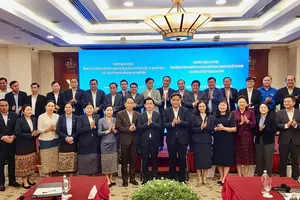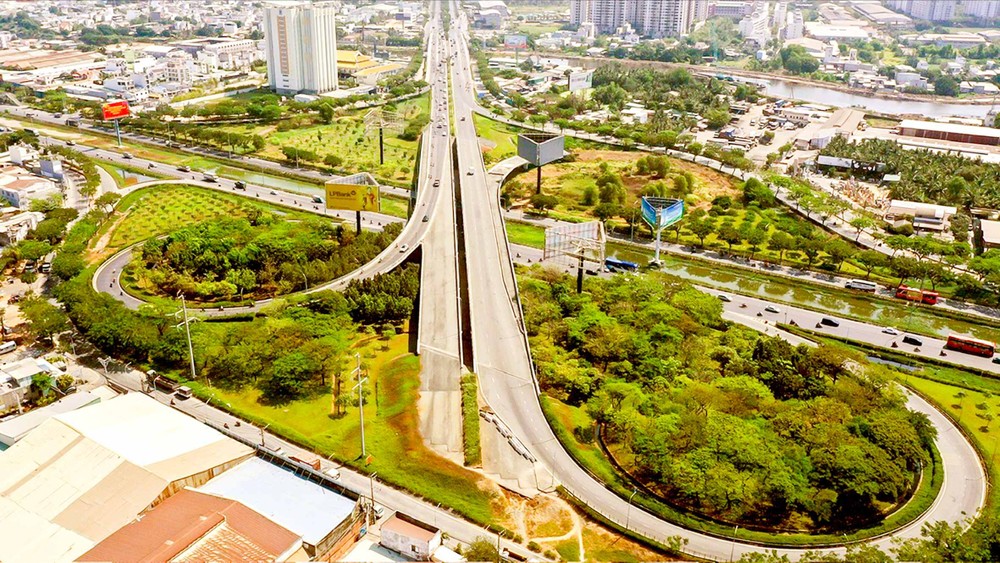
Overlapping, outdated planning
Binh Chanh District spans 25,255 hectares, accounting for 12 percent of HCMC's natural area. It includes 15 communes and one township, with a population exceeding 846,000. According to District Party Secretary Tran Van Nam, despite geographical advantages and potential in land, transportation, and waterways, the district faces rapid urbanization. Each year, the population mechanically increases by over 30,000, with more than 150,000 workers living there. This strains infrastructure, housing, and accommodation, leading to numerous management irregularities in land and housing.
Moreover, the district's general planning from 2012 no longer fits. The land use planning, detailed construction plans at a 1/2000 scale, and new rural construction planning overlap. The land use ratio is not optimal, with agricultural land occupying more than 58 percent of natural land, impacting residents' lives and the district's socio-economic development.
Mr. Tran Van Nam noted that HCMC is in the process of revising its overall construction planning up to 2030, with a vision to 2045. He anticipates that the development plan for Binh Chanh District will address overlapping and deficiencies in current planning projects, minimize irregularities in land and housing management, and meet future developmental demands effectively.
Similarly, Binh Tan District was established over 20 years ago through the division of Binh Chanh District. According to regulations, the review and adjustment period for detailed planning at 1/2000 scale is every 5 years. Between 2015 and 2022, the district undertook the development, assessment, and submission of adjustments for eight planning projects at 1/2000 scale. However, delays were encountered with two projects (Tay Binh Tri Dong and An Lac Intersection) in initiating tasks, and one project did not receive planning task approval.
Some projects faced delays due to consulting firms, failing to meet regulatory timelines. Even among the projects detailed by the People's Committee of Binh Tan District at the 1/2000 scale from 2015 to 2022, four out of eight projects remain unimplemented, including Thinh Phat, 561 An Duong Vuong, Phu Tan, and a 17.7-hectare project. According to Binh Tan District leaders, these delays in planning and implementation have hindered the district's development pace.
Mr. Hoang Minh Tri, former director of HCMC Urban Planning Institute, highlighted that HCMC currently operates with three distinct and non-cohesive planning frameworks that are in conflict rather than in synergy. These include land use planning, general urban planning, and socio-economic planning. For instance, in residential areas, land use plans specify only the area without detailed allocations for public service zones, making accurate budgeting and projections challenging.
Strengthening supervision
HCMC is actively pursuing socio-economic planning and general urban planning. Dr. Vo Kim Cuong, Vice Chairman of HCMC Urban Planning and Development Association, argued that a comprehensive urban plan should be preceded by socio-economic research while socio-economic planning should incorporate spatial direction. This overlap between the two plans could be streamlined by consolidating them into a single unified framework for more efficient use of government resources and faster implementation timelines.
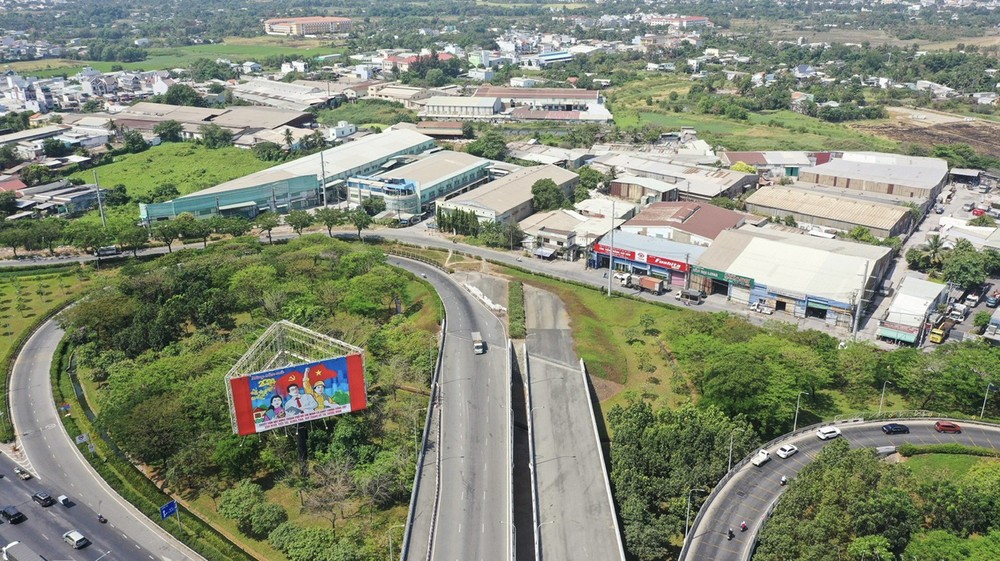
To address planning challenges, Vice Chairman Bui Xuan Cuong of the HCMC People's Committee highlighted that the city manages a vast but disjointed information system across multiple levels, which is inefficiently utilized. This directly impacts the review, evaluation, and implementation of general planning and urban management strategies.
HCMC plans to propose to the Ministry of Planning and Investment guidelines for standardizing data structures integrated into the Geographic Information System (GIS) at all planning levels, especially provincially. This integration aims to unify various planning types into comprehensive big data at national and regional levels, ensuring synchronized, accurate, and timely information for planning, assessment, approval, adjustment, and implementation. Furthermore, HCMC has proposed that central agencies review, amend, and supplement legal documents concerning urban planning, introduce new planning standards, and enact specific regulations tailored to the city's needs.
"To effectively carry out urban planning and meet social development needs, HCMC will continue reviewing legal frameworks on urban planning to promptly address conflicting, overlapping, inadequate, or impractical aspects. Additionally, there will be increased responsiveness to and handling of feedback and suggestions from residents and businesses regarding the implementation of urban planning policies, coupled with enhanced utilization of information technology in urban planning management," explained Mr. Bui Xuan Cuong, Vice Chairman of the HCMC People's Committee.
Regarding the 1/2000 scale zoning and detailed construction planning projects, the HCMC People's Committee has nearly completed the approval for approximately 600 projects, covering a total area of about 88,262.81 hectares.
Mr. Truong Trung Kien, Deputy Director of the HCMC Department of Planning and Architecture, emphasized that in organizing urban planning activities, the city has mandated that planning units adopt innovative approaches with a particular emphasis on integrating modern technologies, developing smart cities, adapting to climate change, enhancing regional connectivity, and closely aligning with socio-economic development goals to attract investors.


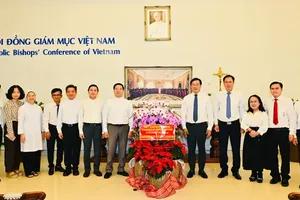


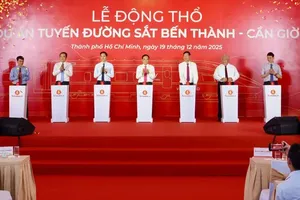


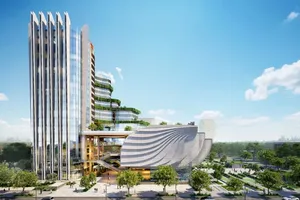
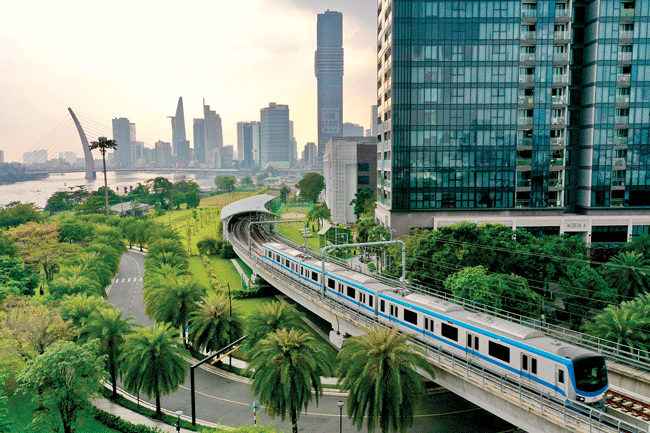
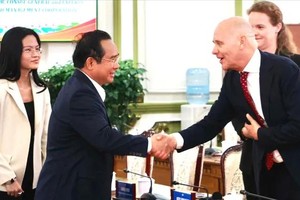
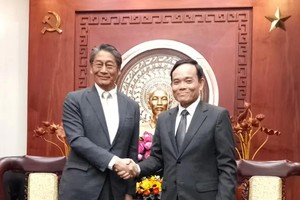

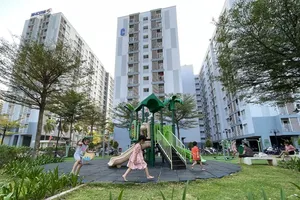

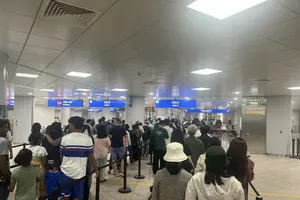
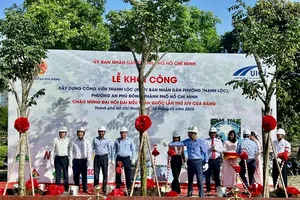

)
